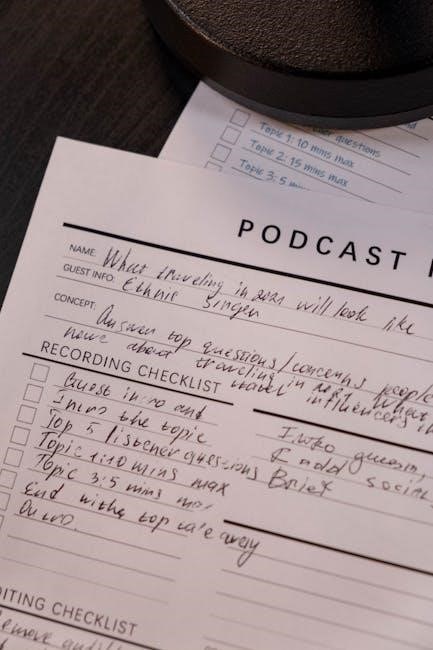Practical Guide for Cerebral Palsy Resources
Navigating life with cerebral palsy requires access to reliable resources. This guide offers an overview of key information, support networks, and practical tools for individuals, families, and caregivers. From educational materials to financial assistance options, discover the support needed to thrive.

Understanding Cerebral Palsy
Cerebral palsy (CP) is a group of disorders affecting movement and muscle tone, caused by brain damage before, during, or shortly after birth. It is the most common motor disability in childhood, impacting approximately one in every 323 children in the United States. Understanding the nature of CP is crucial for effective management and support.
CP is not progressive, meaning the brain damage doesn’t worsen over time. However, the effects of CP can change as a child grows. The condition primarily affects motor control and coordination, but can also involve sensory disturbances, communication difficulties, and other challenges.
The specific symptoms and severity of CP vary widely among individuals, depending on the location and extent of the brain damage; Some individuals may experience mild motor impairments, while others may have more significant disabilities requiring extensive support. Early diagnosis and intervention are key to maximizing a child’s potential and improving their quality of life. Recognizing the diverse manifestations of CP is essential for providing tailored care and support.
Initial Diagnosis and Emotional Support
Receiving an initial diagnosis of cerebral palsy can be an overwhelming experience for families. It’s crucial to acknowledge the emotional impact and seek appropriate support systems. The initial period involves sorting through complex emotions, including shock, grief, and uncertainty. Connecting with other parents and caregivers who have navigated similar journeys can provide invaluable encouragement and a sense of community.
Support groups and online forums offer opportunities to share experiences, ask questions, and learn coping strategies from others. Additionally, seeking professional counseling or therapy can help families process their emotions and develop healthy coping mechanisms. Understanding that emotional support is an ongoing need, not just a one-time intervention, is essential for long-term well-being. Remember, determination, support, and proper treatment are fundamental to help navigate this journey. Resources are available to help families make informed decisions and find the strength they need.
Comprehensive Guides and Toolkits
Comprehensive guides and toolkits serve as invaluable resources for families navigating the complexities of cerebral palsy. These resources offer a wealth of information on various aspects of the condition, from understanding the diagnosis to accessing available support services. A well-structured toolkit can guide families through the initial diagnosis period, answering questions and addressing concerns related to cerebral palsy.
These guides often include information on therapies, legal resources, and funding opportunities, providing a holistic approach to managing the challenges associated with cerebral palsy. They may also offer practical advice on assistive devices, mobility aids, and strategies for promoting independence and inclusion. Furthermore, comprehensive resources often feature personal stories and insights from individuals with cerebral palsy and their families, offering inspiration and a sense of community. By providing clear, concise information and practical tools, these resources empower families to make informed decisions and advocate effectively for their loved ones.

Cerebral Palsy Support Groups and Communities
Cerebral palsy support groups and communities offer a lifeline for individuals and families affected by this condition. These groups provide a safe and supportive environment where members can connect with others who understand their experiences. Sharing stories, challenges, and successes fosters a sense of belonging and reduces feelings of isolation. Support groups offer a platform to exchange valuable information, resources, and coping strategies.
Parents can find encouragement and a sense of community among families navigating life with cerebral palsy. These connections provide emotional support and practical advice on managing daily life, accessing therapies, and advocating for their children’s needs. Moreover, support groups often feature guest speakers, workshops, and educational programs that enhance members’ knowledge and skills. Online forums and social media groups extend the reach of these communities, enabling individuals to connect regardless of geographical limitations. By fostering a sense of community and providing access to information and support, cerebral palsy support groups play a crucial role in empowering individuals and families to thrive.
Financial Resources and Assistance
Navigating the financial aspects of cerebral palsy can be challenging, but numerous resources are available to provide assistance. Understanding these financial avenues is crucial for families seeking to manage the costs associated with care, therapy, and assistive devices. Government programs like Social Security Disability Insurance (SSDI) and Supplemental Security Income (SSI) offer financial support to eligible individuals with cerebral palsy. These programs provide monthly income to help cover essential living expenses.

Additionally, Medicaid offers comprehensive healthcare coverage, including therapies, medical equipment, and long-term care services. Private insurance plans can also help offset medical costs, but it’s essential to understand the coverage details and limitations. Various non-profit organizations and charitable foundations provide grants and financial aid to families affected by cerebral palsy. These resources can help with expenses such as adaptive equipment, specialized therapies, and respite care. Exploring these financial resources and assistance programs can significantly ease the financial burden on families, ensuring access to essential services and support for individuals with cerebral palsy.
Educational Materials and Information
Comprehensive educational resources are essential for understanding cerebral palsy and navigating its complexities. These materials empower individuals, families, and caregivers with the knowledge needed to make informed decisions and advocate effectively. Cerebral Palsy Guide offers free educational resources, financial options, and emotional support for those affected by cerebral palsy. Their website provides articles, guides, and webinars covering various aspects of cerebral palsy, from diagnosis to treatment options.

United Cerebral Palsy (UCP) is another valuable source of information, offering resources on advocacy, independent living, and community support. The Cerebral Palsy Research Network provides access to research studies, clinical trials, and expert insights on the latest advancements in cerebral palsy care. Additionally, organizations like the Center for Parent Information and Resources (CPIR) offer resources tailored to parents, including information on special education, early intervention, and navigating the school system. Accessing these educational materials and information resources is crucial for staying informed and empowered throughout the cerebral palsy journey.
Therapy and Treatment Options
Cerebral palsy management often involves a multifaceted approach, integrating various therapies and treatments to enhance motor skills, reduce complications, and improve quality of life. Physiotherapy plays a crucial role, focusing on strengthening muscles, improving balance, and increasing mobility. Occupational therapy assists individuals in developing daily living skills, adapting tasks, and utilizing assistive devices. Speech therapy addresses communication challenges, enhancing speech clarity, language comprehension, and feeding skills.
Other treatment options may include medication to manage spasticity or seizures, as well as surgical interventions to correct deformities or improve muscle function. Early intervention therapy is particularly beneficial for young children, maximizing their developmental potential. The Cerebral Palsy Foundation provides information on various therapies and treatment options, helping families make informed decisions. Additionally, resources like the Cerebral Palsy Guide offer guidance on accessing specialized medical care and connecting with experienced therapists and medical professionals. Tailoring therapy and treatment to individual needs is essential for optimizing outcomes and enhancing well-being.
Assistive Devices and Mobility Aids
Assistive devices and mobility aids play a vital role in enhancing independence and improving the quality of life for individuals with cerebral palsy. These tools can range from simple aids like adapted utensils to more complex equipment such as wheelchairs and walkers. Mobility aids, including standers and gait trainers, assist in promoting movement and maintaining physical function. Braces and orthotics can provide support, correct alignment, and prevent deformities.
Communication devices, such as speech-generating devices, enable individuals with speech impairments to express themselves effectively. Environmental control units allow users to manage their surroundings, operating lights, appliances, and other devices independently. Selecting the appropriate assistive devices requires careful assessment and consideration of individual needs and capabilities. Resources like the Cerebral Palsy Guide and United Cerebral Palsy offer information on available devices, funding options, and strategies for integrating them into daily life. Occupational therapists can provide valuable guidance in choosing and adapting assistive technology to maximize its benefits.
Legal Resources and Advocacy
Navigating the legal landscape can be complex for families affected by cerebral palsy. Understanding legal rights and available resources is crucial for ensuring access to necessary support and services. Legal resources and advocacy organizations provide assistance with issues such as special education, healthcare benefits, and disability rights. They can help families navigate the process of obtaining appropriate educational accommodations, accessing government assistance programs, and protecting their loved one’s rights.
Advocacy involves actively promoting the rights and interests of individuals with cerebral palsy. This can include participating in policy discussions, raising awareness about the needs of the community, and advocating for improved services and support. Organizations like United Cerebral Palsy offer advocacy programs and resources to empower individuals and families to become effective advocates. Legal aid societies and disability rights organizations provide free or low-cost legal assistance to those who qualify. Connecting with these resources can help families understand their legal options and advocate for their rights effectively.
Early Intervention Strategies
Early intervention is crucial for children with cerebral palsy, aiming to maximize their developmental potential from a young age. These strategies involve a range of therapies and support services designed to address specific needs and promote optimal development. Early assessment and diagnosis are essential to initiate timely intervention.
Therapeutic interventions, such as physical therapy, occupational therapy, and speech therapy, play a vital role in early intervention programs. Physical therapy focuses on improving motor skills, strength, and coordination. Occupational therapy helps children develop skills for daily living, such as dressing, feeding, and playing. Speech therapy addresses communication and feeding difficulties. Early intervention programs also provide family support and education, empowering parents to actively participate in their child’s development. Additionally, early intervention can include assistive technology and adaptive equipment to support mobility and independence. The BornToGetThere project also looks at early detection.
Living with Cerebral Palsy: Personal Stories and Inspiration
The journey of living with cerebral palsy is unique for each individual, marked by both challenges and triumphs. Personal stories offer a powerful source of inspiration, resilience, and hope for others navigating similar paths. These narratives highlight the diverse experiences of individuals with cerebral palsy, showcasing their determination to overcome obstacles and achieve personal milestones.
These stories often emphasize the importance of determination, support, and proper treatment in enabling individuals with CP to lead fulfilling lives. They demonstrate that cerebral palsy does not define a person’s future, and with the right resources and mindset, adults with CP can achieve personal milestones, inspire others, and lead fulfilling lives. These personal accounts offer encouragement and a sense of community for families navigating life with cerebral palsy. Sharing these stories helps to break down stigmas and promote greater understanding and acceptance of individuals with disabilities.
Resources for Caregivers and Families
Caring for a child or loved one with cerebral palsy presents unique challenges and requires access to comprehensive support. This section highlights vital resources designed specifically for caregivers and families, offering guidance, information, and a sense of community. Support groups provide a valuable platform for connecting with other families, sharing experiences, and gaining emotional support.
These groups offer encouragement and a sense of community for families navigating life with cerebral palsy. Respite care services offer temporary relief for caregivers, allowing them to recharge and attend to their own well-being. Educational materials and workshops provide caregivers with the knowledge and skills needed to effectively support their loved ones. These resources cover a wide range of topics, from understanding cerebral palsy and its associated challenges to implementing effective caregiving techniques. Access to reliable information empowers caregivers to make informed decisions and advocate for the best possible care.
The Role of Genetic Testing
Genetic testing is playing an increasingly important role in understanding cerebral palsy. While cerebral palsy is often attributed to brain damage during birth or early childhood, genetic factors can also contribute to its development in some cases. Genetic testing may help identify specific genetic mutations or variations that increase the risk of cerebral palsy.
This information can be valuable for families, providing insights into the potential causes of their child’s condition and informing future family planning decisions. In some instances, genetic testing can help differentiate between different types of cerebral palsy or identify underlying genetic syndromes that may be associated with the condition. This can lead to more targeted and personalized treatment approaches. While genetic testing is not yet a routine part of the diagnostic process for cerebral palsy, its role is expanding as our understanding of the genetic basis of the condition grows.
